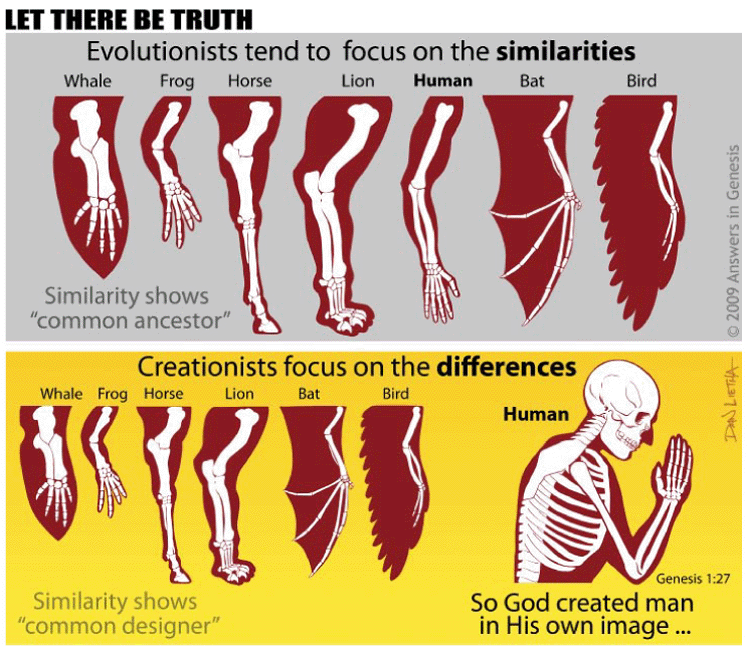Are Similarities Explained by Evolution?
Other “Evidence for Evolution” Exhibits
on August 15, 2016As is obvious even from a quick glance at earth’s fauna, there are many similarities among organisms. Bats, insects, birds, and pterodactyls all have wings. Cats, dinosaurs, cattle, and deer all have four legs. As new advances in science have come about, scientists have been able to compare animals on many levels—from the outward appearance to gene sequences.
Evolutionists have developed two ideas to explain the similarities that exist among living things.
Homology is the term used to describe structures in animals that are alike due to their supposed shared ancestry. Most museums include exhibits that discuss the homologous structures to show evolutionary relationships. For example, they may point to the seven neck vertebrae in humans and giraffes, or to the wings of bats and the arms of humans, or to the five-fingered design among most vertebrates as evidence that we share a common ancestor.
Analogy refers to structures that perform the same function by similar mechanisms in animals which are not thought to have a common ancestor. Many analogous structures are thought to be the result of convergent evolution, which is the separate evolution of similar structures in different animals because of similar environmental pressures.
With similarities to placentals, marsupials are thought to be an example of convergent evolution. The Teacher’s Guide to the Hall of Mammals at the Smithsonian Museum of Natural History states of the marsupials in Australia, “The splendid isolation of the island continent has resulted in a uniquely fantastic evolution of mammals. Here evolution worked in isolation and yet often produced convergences of adaptations found in mammals inhabiting other continents.”
However, the creationist Dr. Jerry Bergman explains homologies and analogies this way.
The simplest and most obvious explanation for the fact that morphological similarities between bones, sensory organs, lungs, or gills exist among most higher animals is that the requirements of life are similar for similar living things, and some designs are preferred in constructing animals because these designs are superior to competing designs. (Jerry Bergman, “Does homology provide evidence of evolutionary naturalism?,” TJ 15:1, 2001, pp. 26–33, available online at www.answersingenesis.org/theory-of-evolution/evidence/does-homology-provide-evidence-of-evolutionary-naturalism/)
Related Media
Creation Museum Collection: Life: Common Designer
Let There Be Truth: Similarities

Related Downloads
Why are Apes Similar?
Audio DownloadAdam Coloring: "A"
PDF DownloadMuseum Guide
Are you exasperated by all the hype about "millions of years" in secular museums? The Museum Guide will help!
Browse Kids BookRecommended Resources
- © 2024 Answers in Genesis
- Privacy Policy
- Contact
- About




